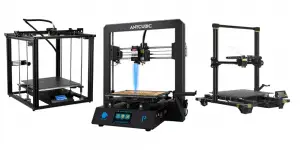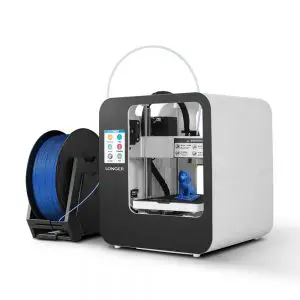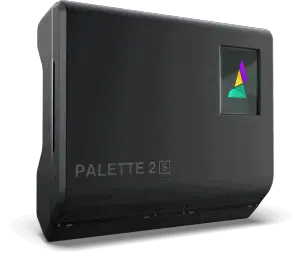You’ve just unboxed your newest 3D printer. It’s shiny and glistening. After you plug it in and tinker with the settings, you watch the temperature of the print bed climb. The quiet murmur of the auto-leveling gets you excited and wondering about which filament to use for your first build. Some standard blue PLA will suffice for printing a 3D Benchy.
Your 3D Benchy prints magnificently! There aren’t any strings in the arches, nor are there any rings or band echoes on the overhang, and now it’s on to something bigger. You’re taking on the spiral vase when the alert sounds that you need to replace the filament. You do so, but when you resume the build the layers shift. The new layers start to warp and crush the first portion of the build. So you stop it, let it cool, and scrape the fail into the trash. Sound familiar?
Why Should You Recycle Filament?
Odds are you’ve had a build fail. Tossing the mangled filament is a necessary step, but what’s the impact on the environment?
Plastic is a known pollutant to the planet, its waterways, and creatures. It borders on irresponsible to continuously contribute to the problem simply for the sake of advancing technology. It’s no wonder that some printing enthusiasts have opted to go green and recycle 3D printer filament. However, becoming a filament recycler may present some challenges.
What Equipment Is Needed To Recycle 3D Printer Filament?
There are a few ways to recycle filament, but if you’d like to do it yourself, you have to make sure you have the right kind of equipment.
Filament Shredders
You can make one if you’re ambitious, with your 3D printer and some other components or you can buy one ready to go right out of the box. Here are a few things to keep in mind when looking for a shredder:
- A good shredder may cost you almost as much, if not more than your 3D printer.
- Grinding plastic can put a strain on traditional motors in commercial shredders.
Filament Extruders
Most of these work by pushing the discarded plastic pieces through the heat until it’s melted down. This heated plastic is then extruded from a nozzle. These nozzle and extruder references are not the same as the ones found on the average 3D printer. The plastic should be cool before being pushed through the extruder onto an empty filament roll.
There’s a variety of machines you can get to recycle the filament, or instead of buying or putting together an array of devices, you can get an all-in-one 3d printer filament recycler. The best 3d printer filament recycler will shred and extrude a wide range of filaments. You’d simply connect the recycler to your computer to ensure its correct operational settings, load the plastic filaments into it and let it work. It will shred the larger pieces on its own, melt it down, and coil the filament onto a spool. These, of course, are very expensive but they will help you minimize your impact on the environment.
How to Recycle Filament the Right Way!
The one thing to remember when recycling filaments is to remember it needs to be sorted. Much like the standard ways you recycle the trash in your home, you have to sort the materials used by your 3D Printer.
A filament recycler that can extrude various materials can do so perfectly fine, but you can only recycle PLA with PLA. Mixing materials like ABS with HIPS can cause some disastrous effects. The polymers and chemical properties often require different heat settings in order to be melted down into a liquid material that can be extruded and cooled into a brand new filament.
If you decide to venture into recycling filament, don’t just toss all those failed jobs into a bin. Separate them based on material type and color. Colors too have various properties that can distort the results you’re looking for when recycling your discarded pieces.
Save Your Excess and Discarded Filament- Save The Planet!
Okay, so maybe you won’t be able to save the entire planet by recycling your filament, but you sure will be doing your part. Being a 3D printing enthusiast, whether you use the machines professionally to build prototypes or personally to sculpt figurines, a certain responsibility falls on those using the technology.
It doesn’t make sense to add more waste to the planet, but the age of 3D printing is fascinating and moving forward exponentially. There is an abundance of reasons why you should recycle your filaments. Helping the planet is one, but here are a few others:
- The cost savings of having your own personal supply of filament will add up. Not to mention, having a few spare rolls around the house will come in handy should you run out during a build. It saves time and money when you can make your own filament.
- The feeling of knowing you’re ahead of the curve in an already cutting-edge industry. If you’re one of the early adopters, there’s something to be said about those who can get ahead of a trend.
Conclusion
At first glance, recycling filamen may seem like a daunting task. However, recycling filanment is a very economical way to continue to print in the long run. There are many times when 3D builds just don’t go as well as planned. Instead of all of that matrial gong to waste recycling it to be reused is a much better option.
Even as your experience 3D printing grows, you will always have a need to recycle used material and failed prints. Moving towards zero waste when it comes to materials like plastic should always be the long term goal in order to protect the enviorment. On the flip side, you’ll save money on material and be able to print some really great builds!








